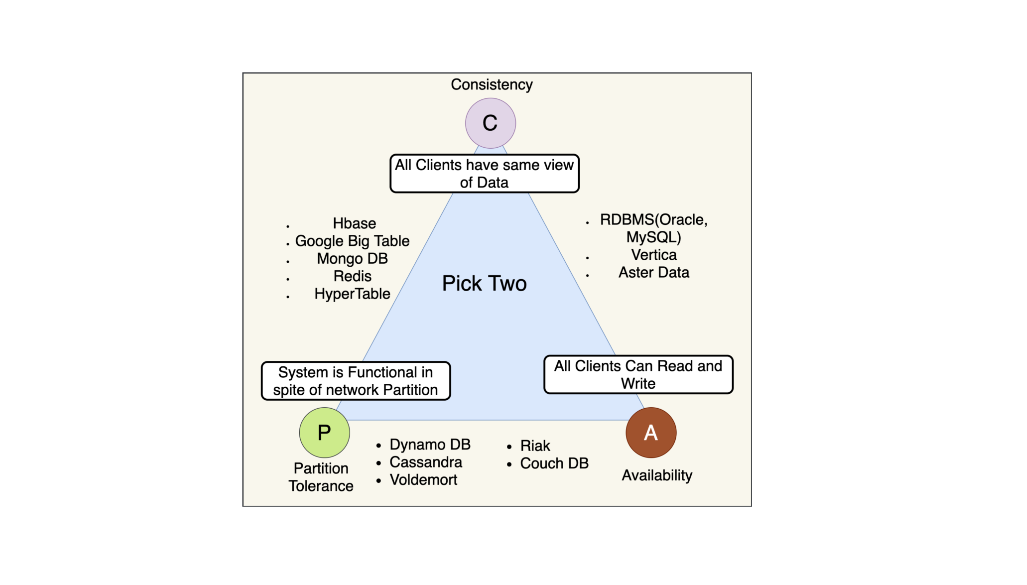CAP Theorem to SQL databases and MongoDB
 Sandesh Shrestha
Sandesh Shrestha
apply the CAP Theorem to SQL databases and MongoDB to understand how each handles consistency, availability, and partition tolerance:
SQL Databases
SQL databases (like MySQL, PostgreSQL) are traditionally designed with strong consistency in mind. Here’s how they generally align with the CAP Theorem:
Consistency: SQL databases ensure strong consistency by using ACID (Atomicity, Consistency, Isolation, Durability) properties. Transactions are handled in a way that guarantees that once a write is made, all reads will see the updated data, as long as the transaction completes successfully.
Availability: Traditional SQL databases might sacrifice some degree of availability in favor of consistency, especially in scenarios involving network partitions. During network issues or server failures, ensuring that all nodes see the same data can result in some requests being denied or not processed.
Partition Tolerance: SQL databases are typically designed for single-node or vertical scaling, which can make partition tolerance challenging. In practice, achieving partition tolerance often involves complex clustering or sharding solutions that can impact consistency and availability.
In Summary: SQL databases generally focus on consistency and may sacrifice availability and partition tolerance, particularly in the presence of network partitions.
MongoDB
MongoDB is a NoSQL database designed with different trade-offs in mind:
Consistency: MongoDB provides eventual consistency by default, meaning that while it ensures data consistency eventually, it might not be immediately consistent across all nodes. However, MongoDB allows for configuration to prioritize consistency in some setups (e.g., using replica sets with write concerns).
Availability: MongoDB is designed to be highly available. It provides mechanisms like replica sets, where data is replicated across multiple nodes, ensuring that if one node fails, others can still serve requests. This allows MongoDB to continue functioning even if some nodes are unavailable.
Partition Tolerance: MongoDB is designed with partition tolerance in mind. It can handle network partitions and continue operating, although this may impact consistency temporarily. MongoDB's sharding and replica set features help maintain operation even in the face of network failures.
In Summary: MongoDB typically prioritizes availability and partition tolerance over immediate consistency. It is designed to continue functioning and serving requests even during network partitions, with eventual consistency as a trade-off.
Comparative Summary
SQL Databases: Focus on consistency and often struggle with availability and partition tolerance. They are more likely to be consistent but may experience downtime or reduced availability during network issues.
MongoDB: Focuses on availability and partition tolerance, with eventual consistency. It ensures that the system remains operational and responsive even during network partitions, but data consistency might be delayed.
Subscribe to my newsletter
Read articles from Sandesh Shrestha directly inside your inbox. Subscribe to the newsletter, and don't miss out.
Written by

Sandesh Shrestha
Sandesh Shrestha
I'm Sandesh Shrestha, a passionate developer from India. Primarily interested in full-stack development and always exploring new technologies. Fascinated by science, space, technology, and ancient history. Love playing video games sometimes 🎮